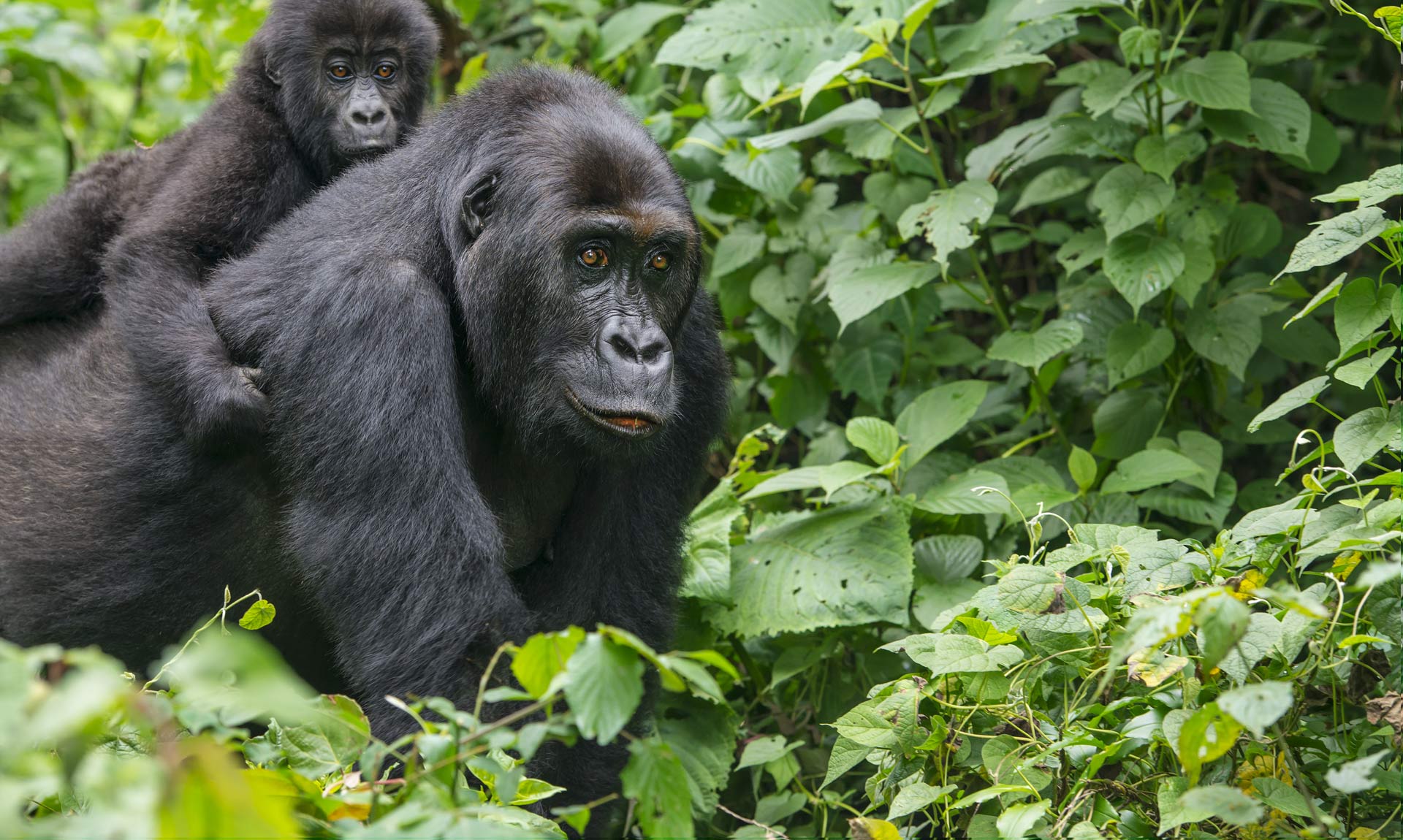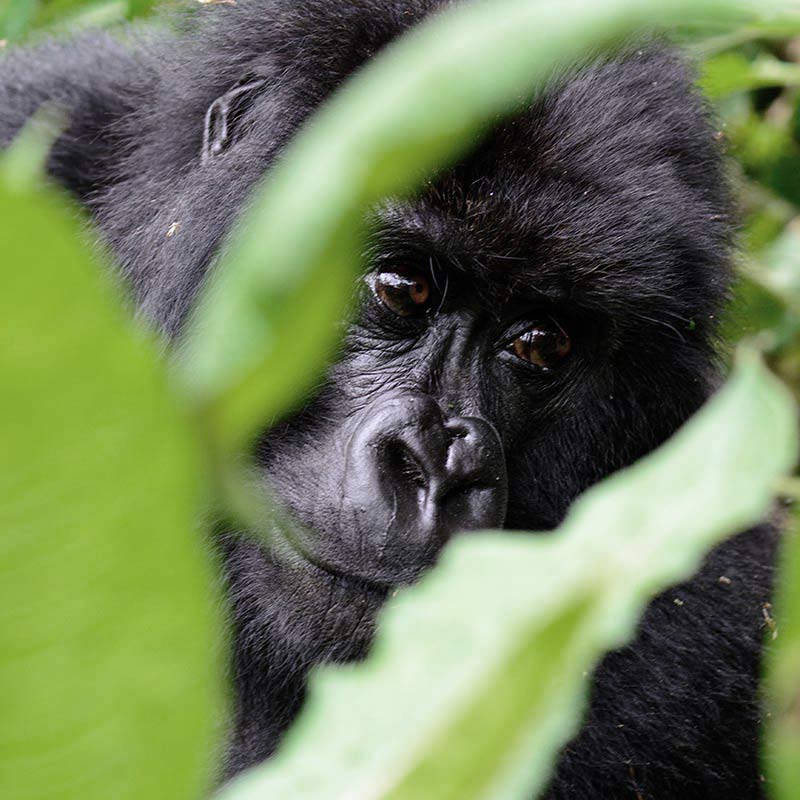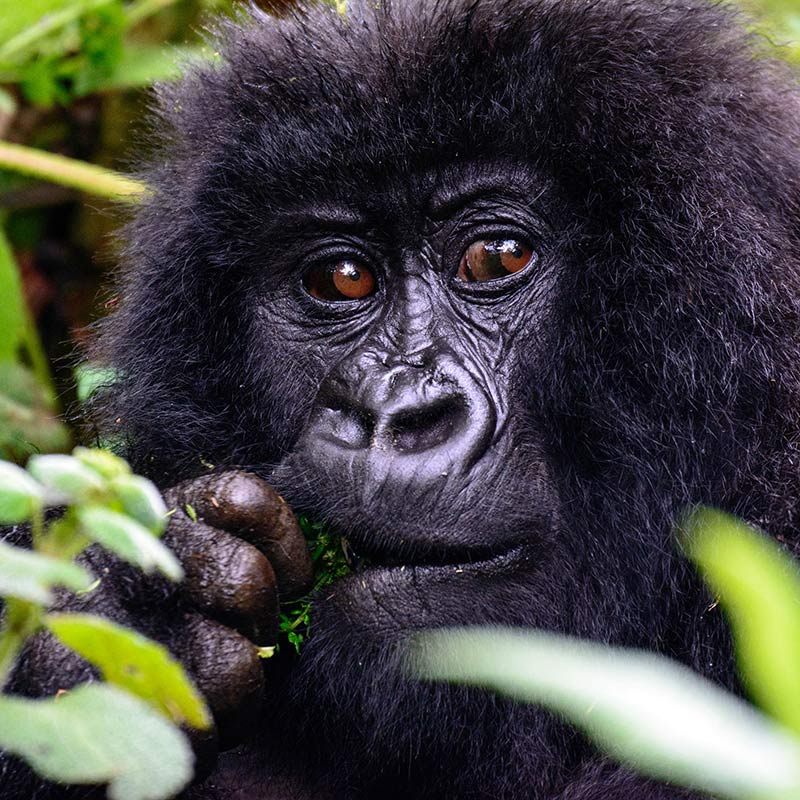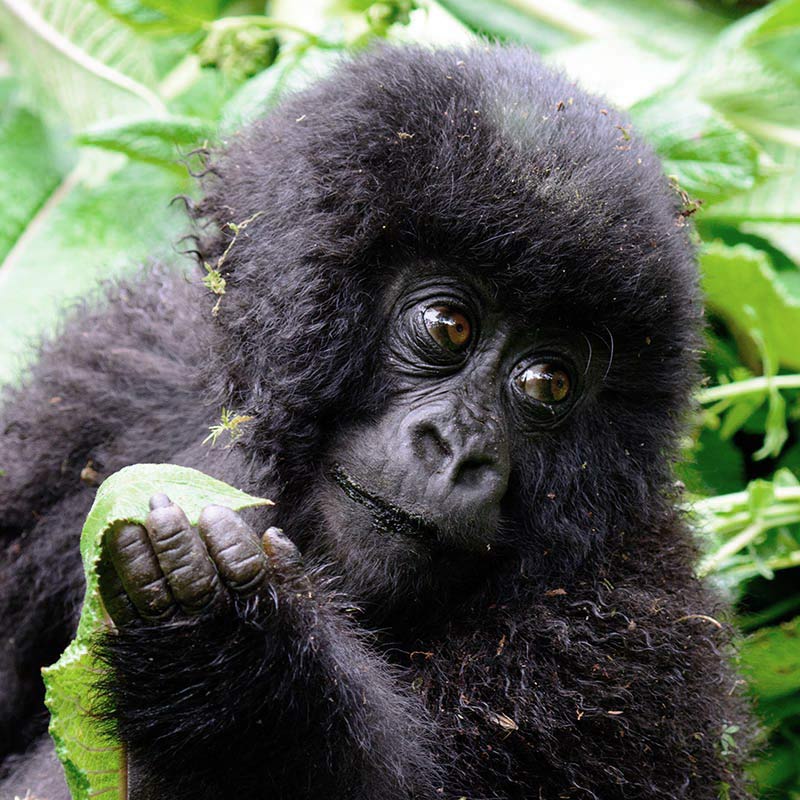EASTERN GORILLAS LEFT
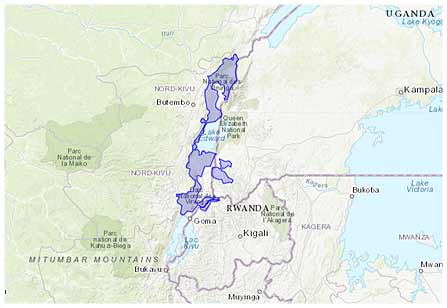
APPROXIMATELY 2,600 REMAIN IN THE WILD
 IN THE 1990s THERE WERE APPROXIMATELY 17,000 EASTERN GORILLAS IN THE WILD
IN THE 1990s THERE WERE APPROXIMATELY 17,000 EASTERN GORILLAS IN THE WILD
 STRONGHOLDS: VIRUNGA MOUNTAIN REGION OF THE DEMOCRATIC REPUBLIC OF CONGO, VOLCANOES NATIONAL PARK IN RWANDA AND THE BWINDI IMPENETRABLE NATIONAL PARK IN UGANDA
STRONGHOLDS: VIRUNGA MOUNTAIN REGION OF THE DEMOCRATIC REPUBLIC OF CONGO, VOLCANOES NATIONAL PARK IN RWANDA AND THE BWINDI IMPENETRABLE NATIONAL PARK IN UGANDA
 THE EASTERN GORILLA IS CLASSIFIED AS CRITICALLY ENDANGERED ON THE IUCN RED LIST
THE EASTERN GORILLA IS CLASSIFIED AS CRITICALLY ENDANGERED ON THE IUCN RED LIST
EASTERN GORILLA FACTS
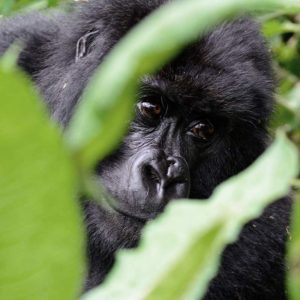 The Eastern Gorilla is the largest of the living apes. Its appearance consists of a heavy body, broad chest, long arms and a shaggy, nearly black coat. One of its subspecies – the Mountain Gorilla – has a particularly long coat that is bluish-black or brownish-grey. Eastern Gorilla adult males typically reach a height of 5 1/2 feet, while females are usually less than 5 feet tall. At about 14 years of age, the hair on their back turns white, giving them their nickname ‘silverbacks’. Gorillas are quadrupeds; they walk on the knuckles of their hands and the soles of their feet.
The Eastern Gorilla is the largest of the living apes. Its appearance consists of a heavy body, broad chest, long arms and a shaggy, nearly black coat. One of its subspecies – the Mountain Gorilla – has a particularly long coat that is bluish-black or brownish-grey. Eastern Gorilla adult males typically reach a height of 5 1/2 feet, while females are usually less than 5 feet tall. At about 14 years of age, the hair on their back turns white, giving them their nickname ‘silverbacks’. Gorillas are quadrupeds; they walk on the knuckles of their hands and the soles of their feet.
Eastern Gorilla society is arranged around a close-knit family unit, led by the dominant male silverback. Families can consist of over 50 individuals. Females give birth only once every 3 – 4 years following an 8 1/2 month gestation period. Young Eastern Gorillas are born with pinkish-grey skin. They can crawl at about 9 weeks of age but are not fully weaned until 3 1/2 years after birth. Therefore, this extended period of intense postnatal care is believed to be the reason for long intervals between new births. Adult male Eastern Gorillas are the primary defenders of families. They use their large size, chest beating and charging tactics to intimidate threats.
EASTERN GORILLA HABITATS
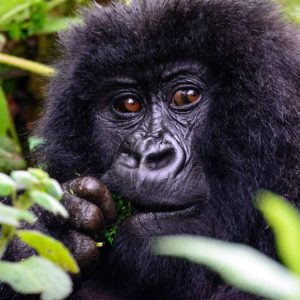 Eastern Gorillas inhabit tropical rain forests. It’s subspecies, the Mountain Gorilla, lives in mountainous areas between 3,800 feet – 13,500 feet. Only 1,000 Mountain Gorillas remain in the wild. Eastern Gorillas are found in two populations, isolated from each other. One is the Virunga Volcanoes region, located on the borders of Rwanda, Uganda and the Democratic Republic of Congo. The other is a protected area in Bwindi Impenetrable National Park, in southwestern Uganda.
Eastern Gorillas inhabit tropical rain forests. It’s subspecies, the Mountain Gorilla, lives in mountainous areas between 3,800 feet – 13,500 feet. Only 1,000 Mountain Gorillas remain in the wild. Eastern Gorillas are found in two populations, isolated from each other. One is the Virunga Volcanoes region, located on the borders of Rwanda, Uganda and the Democratic Republic of Congo. The other is a protected area in Bwindi Impenetrable National Park, in southwestern Uganda.
EASTERN GORILLA THREATS
 The greatest threat to Eastern Gorillas is a byproduct of armed conflict between humans in and around ‘protected areas’. Over the last 10 years, numerous Eastern Gorillas have been killed accidentally in crossfire. They have also been hunted for food by warring factions and refugees hiding in the forest. Civil war has made firearms more accessible and the numbers of refugees continues to increase. As a result, ongoing volatility in these regions continues to threaten Eastern Gorilla population.
The greatest threat to Eastern Gorillas is a byproduct of armed conflict between humans in and around ‘protected areas’. Over the last 10 years, numerous Eastern Gorillas have been killed accidentally in crossfire. They have also been hunted for food by warring factions and refugees hiding in the forest. Civil war has made firearms more accessible and the numbers of refugees continues to increase. As a result, ongoing volatility in these regions continues to threaten Eastern Gorilla population.
A relatively new threat is tourism. Tourists get too close to Eastern Gorillas and pass on human diseases, which the Eastern Gorillas are not immune to.


